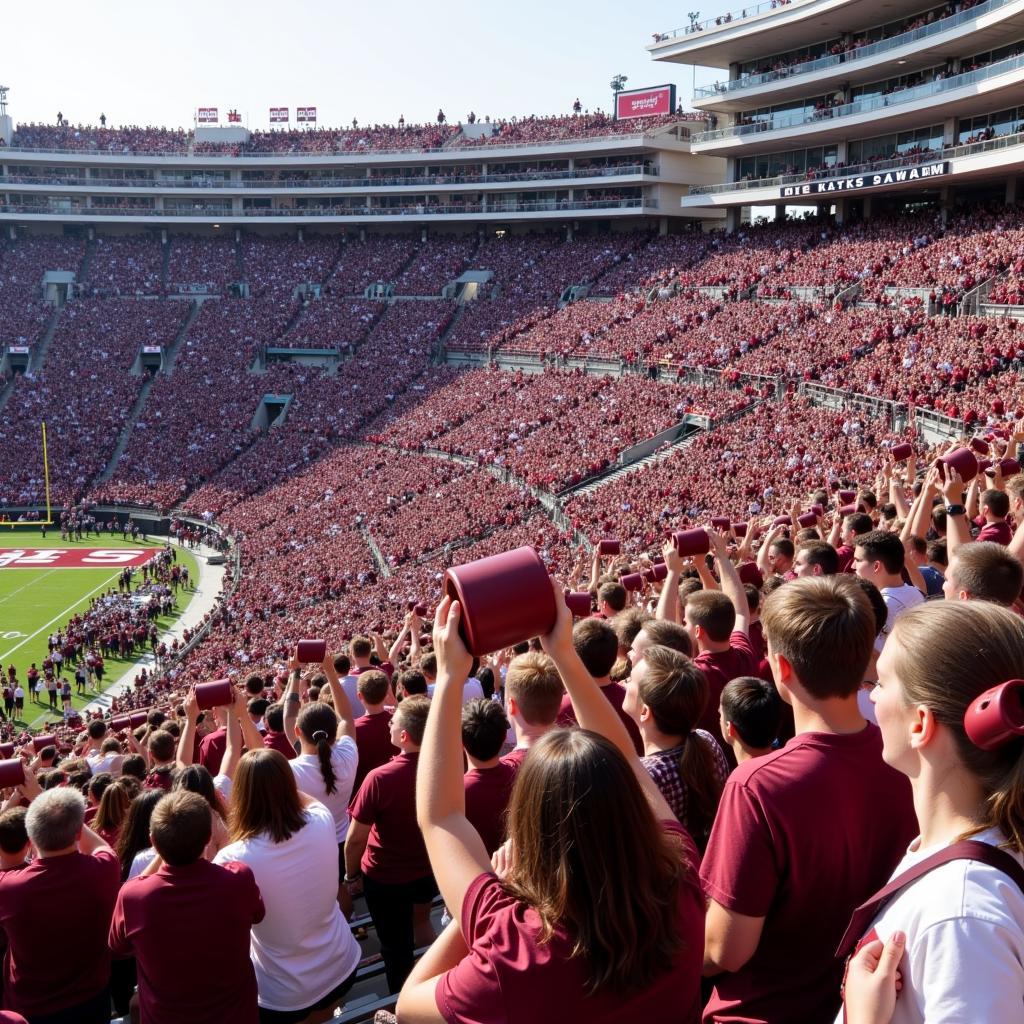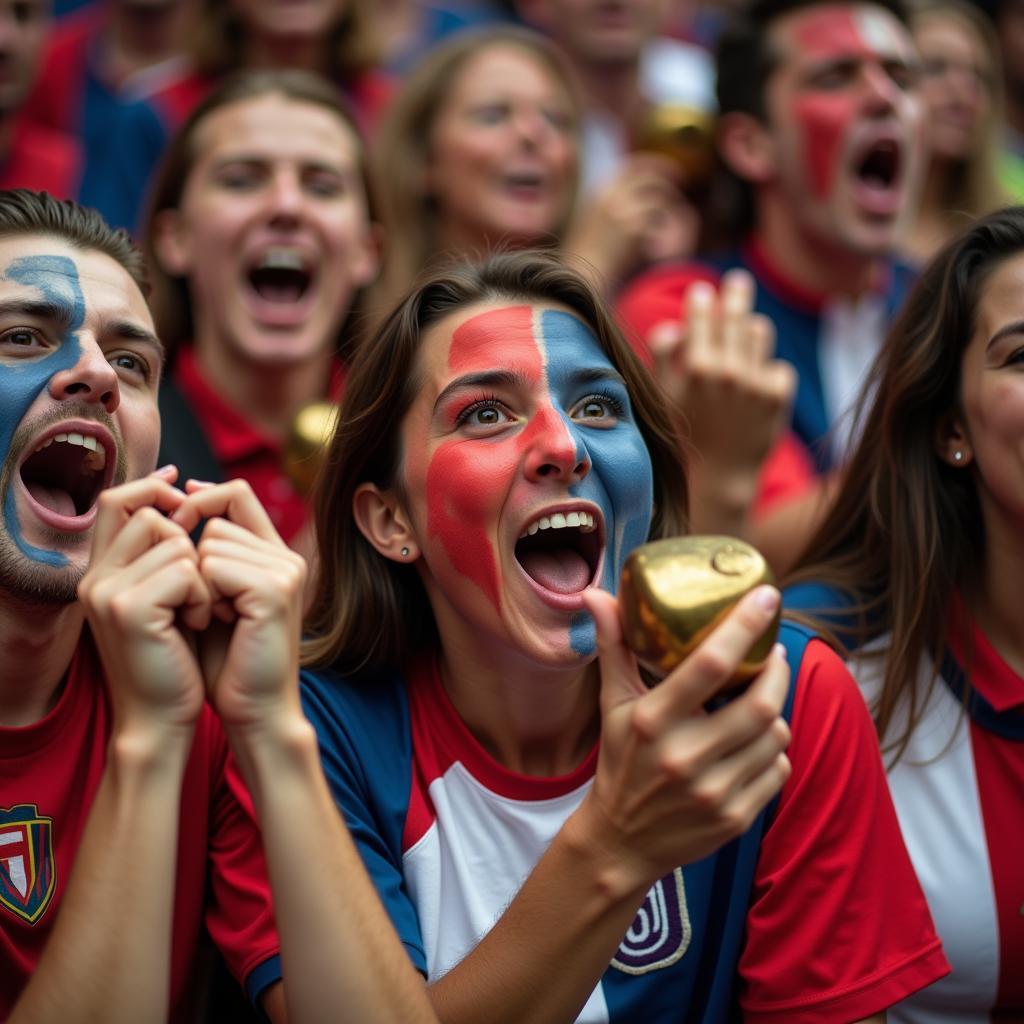Fan Cowbells. Those clanging, echoing symbols of passion have become a staple in stadiums and arenas worldwide. From the echoing clang in European football matches to the rhythmic roar in American sporting events, these simple noisemakers have evolved into a powerful expression of fan support, adding a unique auditory dimension to the spectator experience. But where did this tradition come from, and why are these seemingly simple instruments so effective in igniting the crowd?
The History and Evolution of Fan Cowbells
Cowbells weren’t always associated with cheering on a team. Their origins lie in the more practical purpose of locating grazing cattle. Over time, however, their distinctive sound found its way into music and cultural celebrations, eventually making the leap into the sporting world. Some trace the use of cowbells in sports back to Swiss alpine traditions, where they were used to signal and celebrate during sporting competitions. The journey from the pastures to the playing field is a testament to the adaptable nature of this simple instrument.
One of the earliest documented uses of cowbells in modern sports is in American college football, specifically at Mississippi State University. The exact origin story is shrouded in a bit of mystery, with several different accounts vying for legitimacy. One popular narrative centers around a prize cow wandering onto the field during a game in the 1930s. Regardless of the true origin, the cowbell quickly became a symbol of MSU, and their fans are now famous for the deafening clangor they create during games.
 Mississippi State Fans Ringing Cowbells
Mississippi State Fans Ringing Cowbells
The Psychology of Noise and the Cowbell’s Impact
Why are cowbells so effective in amplifying the atmosphere of a sporting event? The answer lies in the psychology of noise and its impact on group dynamics. The rhythmic clanging creates a sense of unity and shared purpose, binding the fans together in a collective expression of support. This auditory stimulation can also heighten arousal and excitement, adding another layer to the emotional intensity of the game. It’s not just noise; it’s a primal call to rally behind your team.
Furthermore, the sheer volume produced by thousands of clanging cowbells can be intimidating for opposing teams, creating a distinct home-field advantage. The constant din can disrupt communication and concentration, making it harder for visiting players to perform at their best. This psychological edge, combined with the boost in morale for the home team, makes the cowbell more than just a noisemaker; it’s a strategic tool.
 European Football Fans with Cowbells
European Football Fans with Cowbells
Cowbells Around the World: From Football to Formula 1
While their association with American college football is perhaps the most well-known, fan cowbells have found their way into a variety of other sports around the globe. They are a common sight (and sound) in European football matches, particularly in countries like Switzerland and Austria. Even motorsport fans have embraced the cowbell, adding their unique clang to the roar of engines at Formula 1 races. The universal appeal of the cowbell speaks to its simple yet powerful ability to connect fans with their teams and create an unforgettable atmosphere.
Are Fan Cowbells Too Loud? Addressing the Controversy
The resounding clang of cowbells isn’t without its detractors. Some argue that the noise can be excessive and even detrimental to the enjoyment of the game. Concerns about potential hearing damage and disruption to players’ concentration have led to regulations and restrictions on cowbell use in certain venues. Finding a balance between passionate fan expression and the comfort of all attendees remains an ongoing discussion in the world of sports.
Conclusion: The Enduring Appeal of the Fan Cowbell
From their humble beginnings on farms to their prominent place in modern stadiums, fan cowbells have become an undeniable part of the sporting landscape. They symbolize passion, unity, and the unwavering support of the fans. While the debate surrounding their volume may continue, the infectious energy and unmistakable clang of fan cowbells are likely to resonate in stadiums and arenas for generations to come.
FAQ
- Where can I buy a fan cowbell? Sporting goods stores, online retailers, and team shops often sell cowbells.
- Are cowbells allowed in all stadiums? Regulations vary, so it’s best to check the specific venue’s policy before bringing a cowbell.
- What are cowbells made of? Most fan cowbells are made of metal, such as steel or aluminum.
- How loud can a cowbell get? The sound level can vary depending on the size and material of the cowbell.
- Are there different types of cowbells for different sports? While the basic design remains the same, some cowbells are decorated with team logos or colors.
- Can cowbells be personalized? Yes, some vendors offer customization options for cowbells.
- Are there any alternatives to cowbells for making noise at sporting events? Other noisemakers include clappers, horns, and inflatable cheering sticks.
For any further inquiries, please contact us at Phone Number: 0903426737, Email: [email protected] or visit our office at Lot 9, Area 6, Gieng Day Ward, Ha Long City, Gieng Day, Ha Long, Quang Ninh, Vietnam. We have a 24/7 customer support team ready to assist you.


